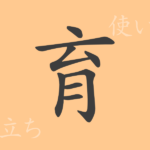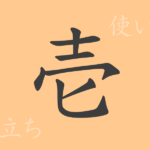“
The beauty of the Japanese language lies in its complex and rich character system. ‘一’ (Iti), a fundamental Kanji often encountered in daily life, deeply intertwines with our language and thought. This article explores the origins, meanings, applications, and its role in our lives of the Kanji ‘一’.
Origins of 一 (Iti)
The Kanji ‘一’, representing the number one, can trace its origins back to ancient Chinese oracle bone scripts. Initially depicted as a single line, it symbolically represents ‘one’ in its simplest form. Over time, this single line has come to symbolize the beginning and the end of all things, embodying a simple yet profound philosophical significance.
Meaning and Usage of 一
‘一’ fundamentally means ‘one’, the most basic number. It is not only a numeric value but also commonly used to denote the ‘beginning’ or ‘first’ in sequences. Phrases like ‘一番’ (Itiban, the best or first) and ‘一致団結’ (Ittidanketu, unity) illustrate its use in expressing primacy or unity.
Pronunciation, Stroke Count, and Radical of 一
The Kanji ‘一’ is as straightforward in its pronunciation and structure as it is in its concept:
- Pronunciation: On’yomi (Sino-Japanese reading) is ‘Iti’ and ‘Itu’, kun’yomi (native Japanese reading) includes ‘Hito-‘, ‘Hito-tu’.
- Stroke Count: ‘一’ consists of just one stroke.
- Radical: It does not serve as a radical for other Kanji, but ‘一’ itself is categorized under the ‘一部’ radical.
Phrases, Idioms, and Proverbs Involving 一
There are numerous idioms and proverbs including ‘一’ that reflect Japanese thoughts and values:
- 一石二鳥 (Issekinityou): Achieving two benefits with one action.
- 一心不乱 (Issinhuran): Concentrating intensely on one thing without distraction.
- 一期一会 (Itigoitie): Treasuring every meeting as it may never recur.
- 一刻千金 (Ikkokusenkin): Time is incredibly precious and valuable.
Conclusion on 一
The Kanji ‘一’ is simple in form but rich in meaning and integral to Japanese daily life and thought. Though it may seem basic, it carries a profound historical and cultural significance. Understanding ‘一’ allows us to appreciate the depth of the Japanese language and its cultural nuances.
“

























